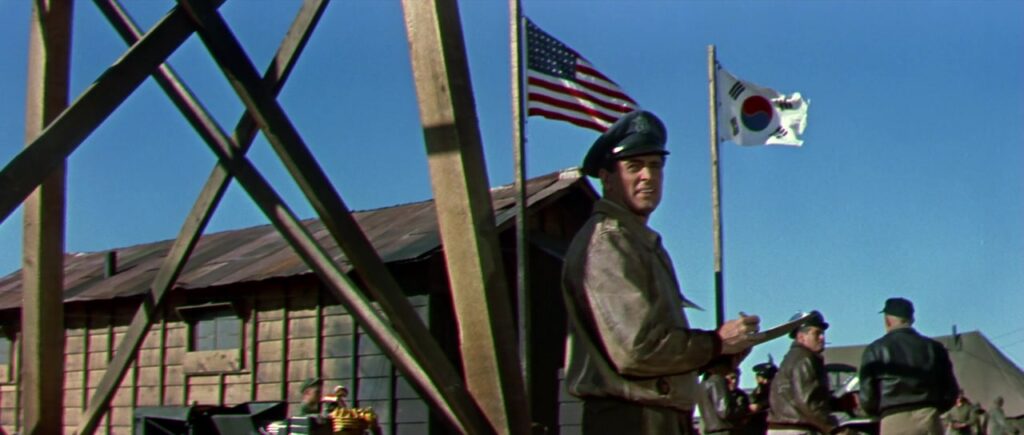
Douglas Sirk’s Battle Hymn (1957) is in many ways a typical “ode to the armed forces” melodrama that was very popular in the fifties. Still, there’s enough of Sirk in Battle Hymn to elevate the film beyond the commonplace, even if it isn’t on par with The Tarnished Angels which also came out that year. The special effect photography for the airplane sequences is particularly good for the time, rivaling Josef von Sternberg’s underrated Jet Pilot (1957). The film repairs Sirk with his frequent muse Rock Hudson and producer Ross Hunter, all of whom contribute to the distinctly Sirkian confection.
One of the most immediately striking aspects of Sirk’s Korean War drama is that it features People of Color in key supporting roles that get more than the usual character development. While this can be seen in many earlier smaller pictures, such as the films of Sam Fuller, it wasn’t the norm for big marquee titles. Another similar quality to Battle Hymn is that it avoids racist caricatures of the Korean people and yellow face. Anna Kashfi is questionable casting for the role of En Soon Yang, but it is stipulated that in the context of the film that the character is a majority Anglo-Indian.
Rock Hudson’s Col. Hess is in many ways a reprisal of Hudson’s character Bob Merrick in the earlier Sirk and Hunter collaboration Magnificent Obsession (1954). Both Hess and Hunter are plagued by guilt and seeking redemption which they both find in the teachings of Christ, albeit rather obliquely. In the moral economies of Battle Hymn and Magnificent Obsession the greatest sin is that of carelessness born out of selfishness. Where Merrick transforms himself into a brilliant surgeon and finds true love in the arms of the woman he inadvertently widowed, Hess finds Godliness in the caring for Korean refugees and orphans.
The romance element of Magnificent Obsession is absent in Battle Hymn which steers the film constantly along one direction, giving it the flavor of propaganda. There is an effort to counter this effect by giving Hess numerous scenes with supporting characters that focus on their lives but these segues remain avenues largely unexplored. The moment that comes closest to being successful is when Hess and Lt. Maples (James Edwards) connect over their mutual grief and guilt for having caused the deaths of innocent civilians.
Battle Hymn is indicative of the western theological morality that dominated the melodrama of the post-war period. These spectacles of human emotion may be effective but they lack the reality and pathos of those films which lean more heavily into contemporary social dilemmas. Almost all of Sirk’s most famous works have some sort of Christian philosophizing, but his best films manage to fold it into subtext. When one looks at Imitation Of Life (1959), There’s Always Tomorrow (1956), Written On The Wind (1956) and All That Heaven Allows (1955) it’s clear that these films, as melodramatic as they are, serve as a mirror image of society, reflecting reality in broad, dynamic strokes.
